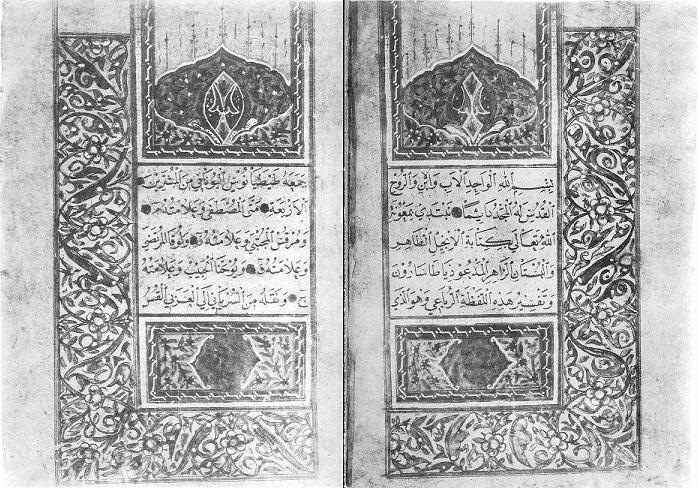The Resurgence of the Gospel, Part One: The Medieval Prologue and the Remapping of the World
This provides the setting for what would take place soon after the inroads of the invasions of outsiders from the steppes of Eurasia, the onset of the Sassanian Persians, and the rise of the armies of Islam in the wake of Mohammed. When “Medieval Europe” was in the making in the disruption of the Roman imperial world and the rise of invaders and the westward expansion of the Sassanid dynasty of Persia under Mithridata II and the Arabian armies of al-Mansur, one of the most incredible stories of the expansion of the Gospel across the face of Asia unfolded.
Out of the fastness of the monasteries at Nisibis, Arbela, northwestern Arabia, Damascus, Antioch, and the fastness of the Nile river in Egypt, emerged one of the most untold stories of evangelism across the vastness of Central and Eastern Asia.
Mithridata II founded the capital of Sassanid Persia on the east bank of the Euphrates river right across from the Roman Syrian city of Seleucia. Close to Seleucia, on the west bank was the town of Dura-Europos which had in its midst the oldest known Christian house church. With the Sassanid regime all contact with Christians in the East was practically cut. The same effect occurred in Palestine when al-Mansur captured Jerusalem. There was no outright persecution of Christians under al-Mansur but they were considered of dhimmi status (second-rate) and yet admired for their architectural skills. Jews were also dhimmi but honored for their medical expertise. Christians were sporadically persecuted and their gathering places destroyed. The result was that the Christians who remained turned especially to the trades and thereby became less conspicuous in their faith. This was in their favor as they became the foremost evangelists who traveled the overland trade routes. Nisibis, Kirkuk, Mosel, and Arbela, retained strong Christian enclaves, with leadership coming from the Monasteries. In contrast to the Patriarch in Constantinople and to the Pope in Rome, each prime leader was designated as Catholicos over a given geographical area. In this regard, decisions regarding mission and policy centered in a council much as was the case for the church in the eastern half of the Roman Empire and unlike the western half where a curia and papacy came to exist.
One other situation arose which helped to distinguish the Church in the East to a greater degree from the Church in the Latin West and the more polyglot church in the Eastern Roman world. Beginning in the 300’s the Christian world found it necessary to more closely define its faith in Jesus as to who Jesus is and the essentials of the Christian faith. Three major statements arose. In their order of appearance over time was what became known as The Apostles’ Creed, the Nicene Creed, and finally the Nicene-Constantinopolitan Creed enunciated in A.D. 325. This creedal affirmation was agreed upon by Christian leaders of east and west and north and south. The real stickler of the whole confession was the statement of what came to be known in Christian experience as the Trinity: Father, Son, and Holy Spirit. How they affirmed the nature of Jesus and what is to be emphasized both in preaching and teaching varied. The variance was basically between stressing Christ’s divinity and Christ’s humanity. Theodore of Mopsuestia and then Nestorius stressed Jesus’ humanity more so than his divine nature. Cyril of Alexandria stressed the doctrine of redemption through Christ’ divine nature. The Council of Ephesus in 431 looked at this issue and came down in favor of Cyril and the Egyptian Christians. They were characterized as Monophysites.
Theodore of Mopsuestia and Nestorius of Antioch in Syria came into disfavor and were labeled Dyophysites. That solved nothing but split the council and caused divisions. In A.D. 449, the larger Council of Christians at Chalcedon labeled the Ephesian Council as a “Robber Council” for encouraging the split that occurred.
Chalcedon’s decision was a partial victory for Nestorius but neither faction was completely satisfied. The end effect was to swing a vast majority of the churches of the East as distinctive “Nestorian” in character though evangelists from Alexandria, Egypt, and Antioch, founded Monophysite Churches in greater Asia.
After nearly a thousand years, at the time of the Protestant Reformation, Nestorius’ memoir was discovered. Martin Luther read The Bazaar of Heracleides. He felt that Nestorius was no heretic but was very much Trinitarian even when he maintained that Mary was no theotokos (God-bearer) but instead the mother of Jesus, the son of God.

Arabic Diatessaron, translated by Abul Faraj Al Tayyib from Syriac to Arabic in the 11th century.
Image: Wikimedia Commons
With the Peshitta (The Syriac translation of the Bible), Tatian’s Diatessaron [The Gospels of Matthew, Mark, Luke and John in Parallel Columns), and Nestorius’ understanding of the Trinity, The Catholic Church of the East was equipped to begin the evangelization of greater Asia to the Gospel of Jesus, the Christ of God. Moving out from Antioch, Damascus, Edessa, Nisibis, Arbela, these Christian tradesmen and monastics took the Gospel into northwestern India, into what is now Afghanistan, northward and eastward to Kashgar, Balk, Merv, Bukhara, Samarkand, and into the Mongolian heartlands and eastward to China before A.D. 700 when the Nestorian evangelist Alopen arrived at the Chinese Court.
Category: Church History, Summer 2018


